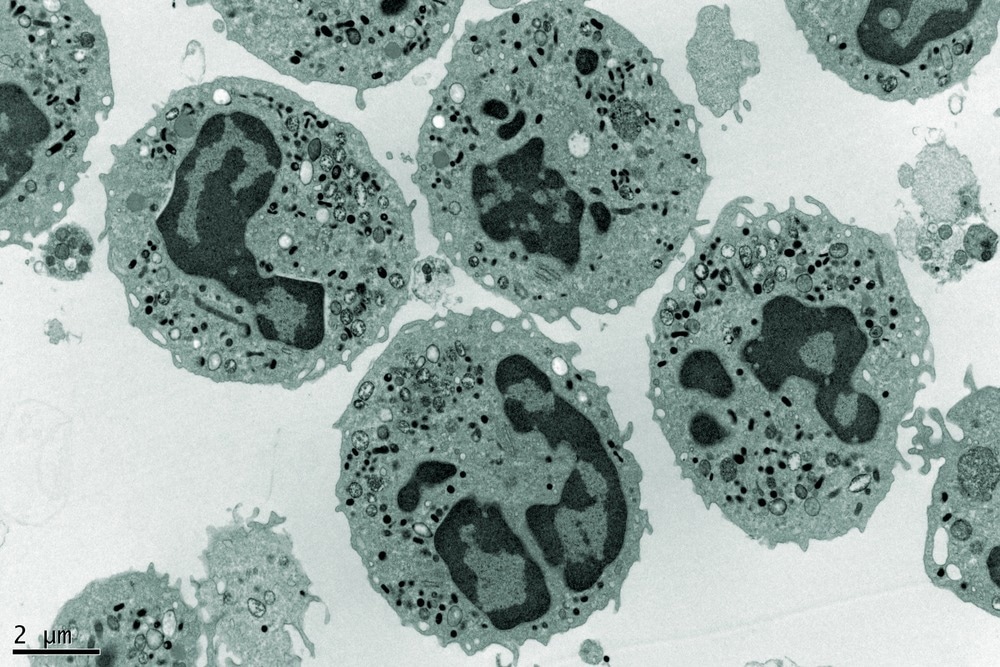This article discusses the differences between multimodal and correlative microscopy and their respective advantages and disadvantages.

Image Credit: Dlumen/Shutterstock.com
The Microscopic World
Since the first microscopes were developed in the 16th century, the field of microscopy has advanced significantly. Today, scientists have access to a wide range of strong imaging methods, each with particular advantages and disadvantages. Multimodal and correlative microscopy are two such sophisticated microscopy techniques. These techniques have vastly different goals and uses, even though they might seem similar.
Multimodal Microscopy
A single microscope system incorporating various imaging methods is called multimodal microscopy. With this method, one can learn more about a sample in greater depth and with greater accuracy by combining the advantages of different imaging modalities. The most typical pairing combines optical microscopy—brightfield, fluorescence, or confocal microscopy, with electron microscopy—scanning or transmission electron microscopy. AFM (atomic force microscopy), Raman spectroscopy, and X-ray microscopy are just a few other possible combinations.
The main benefit of multimodal microscopy is its ability to provide supplementary data from several imaging techniques. While electron microscopy can produce high-resolution images of cellular structures, optical microscopy can use fluorescent markers to identify the distribution of specific molecules within a cell. The structure and function of the sample can be better understood by integrating these modalities.
However, multimodal microscopy has significant drawbacks. One area for improvement is the requirement for specialized tools and knowledge to use and keep up with the various imaging modalities. In addition, compared to single-mode microscopes, multimodal systems may be more challenging to set up and run due to their complexity.
Correlative Microscopy
Correlative microscopy is a method for studying a single sample that incorporates information from many imaging techniques. Correlative microscopy normally necessitates utilizing different microscopes for each technique, in contrast to multimodal microscopy, which combines numerous imaging modalities into a single microscope system. After imaging with one modality, the sample is moved to a different microscope for additional imaging. This process could be performed numerous times depending on how many different imaging modalities are being employed.
Correlative microscopy's main objective is to combine the data from many imaging modalities to understand a sample better. For instance, a researcher might first utilize fluorescence microscopy to see certain proteins within a cell, then move on to electron microscopy to look at the ultrastructure of the cell. The scientist can ascertain the spatial relationship between the proteins and the cellular structures by contrasting the images produced by the two procedures.
Combining the strengths of many imaging techniques to provide a comprehensive view of the sample is one of the key advantages of correlative microscopy. Additionally, since the data was gathered from the same sample, it is possible to compare and correlate the data collected using various modalities directly.
However, correlative microscopy also comes with some difficulties. One problem is the necessity to physically move the sample between various microscopes, which can be time-consuming and risk damaging the sample or introducing artifacts. Additionally, aligning and superimposing images from other modalities can be challenging, especially if they use various contrast techniques or resolutions. Correlative microscopy also needs access to a variety of specialist microscopes and knowledge of how to use them, just like multimodal microscopy.
Comparing Multimodal and Correlative Microscopy
In conclusion, while both multimodal and correlative microscopies use a variety of imaging techniques, their aims and methods are different. Multiple imaging modalities are intended to be integrated into a single microscope system through multimodal microscopy, enabling the simultaneous collection of complementing data. Correlative microscopy, in contrast, focuses on merging information from various microscopes to investigate a single sample to directly compare and correlate the data collected from multiple methods.
Simultaneous data collection made possible by multimodal microscopy can save time and lessen the chance of sample damage, but it might also call for more specialized tools and knowledge. Contrarily, correlative microscopy allows for the flexible combination of data from several microscopes; however, moving the sample between systems may be time-consuming and result in artifacts.
In the end, the purpose and the available resources will determine whether multimodal or correlative microscopy needs to be used. By providing a more thorough and in-depth understanding of their structure and function, both strategies can considerably improve our understanding of complex biological systems. The ability to examine the microscopic world will undoubtedly increase as technology develops, thanks to the emergence of increasingly potent and varied microscopy techniques.
More from AZoOptics: The Future of Lignin Research Using Mass Spectrometry
References and Further Reading
Caplan, J., Niethammer, M., Taylor, R. M., et al. The power of correlative microscopy: multi-modal, multi-scale, multi-dimensional. Current Opinion in Structural Biology, 21(5), 686-693 (2011). https://doi.org/10.1016/j.sbi.2011.06.010
Pelicci, S., Furia, L., Pelicci, P. G., et al. Correlative Multi-Modal Microscopy: A Novel Pipeline for Optimizing Fluorescence Microscopy Resolutions in Biological Applications. Cells, 12(3), 354 (2023). https://doi.org/10.3390/cells12030354
https://www.port.ac.uk/node/645/the-correlative-and-multimodal-comic-microscopy-network
https://theses.hal.science/tel-01868852/
https://opg.optica.org/boe/fulltext.cfm?uri=boe-12-9-5452&id=456054
https://pubmed.ncbi.nlm.nih.gov/23317905/
https://www.frontiersin.org/articles/10.3389/fnsyn.2016.00028/full
Disclaimer: The views expressed here are those of the author expressed in their private capacity and do not necessarily represent the views of AZoM.com Limited T/A AZoNetwork the owner and operator of this website. This disclaimer forms part of the Terms and conditions of use of this website.